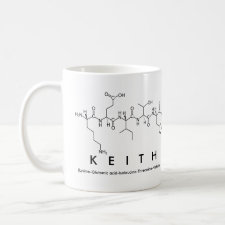
Authors: Hillberg AL, Brain KR, Allender CJ
Article Title: Design and evaluation of thin and flexible theophylline imprinted polymer membrane materials.
Publication date: 2009
Journal: Journal of Molecular Recognition
Volume: 22
Issue: (3)
Page numbers: 223-231.
DOI: 10.1002/jmr.935
Abstract: The aim of this work was to produce a thin, flexible and diffusion able molecularly imprinted polymeric matrix with good template accessibility. Membranes were prepared using a non-covalent molecular imprinting approach and their physical characteristics and binding capabilities investigated. Two materials were used, a poly(tri-ethyleneglycol dimethyacrylate-co-methyl methacrylate-co-methacrylic acid) copolymer containing 14% cross-linker and a monomer (g) to porogen (ml) ratio of 1:0.5 (A), and a blend of poly(TEGMA-co-MAA) and polyurethane (B). The polyurethane was added to improve membrane flexiblity and stability. The polymers were characterized using AFM, SEM and nitrogen adsorption, whilst binding was evaluated using batch-rebinding studies. For all membranes the specific surface area was low (<10 m2/g). MIP (A) films were shown to bind specifically at low concentrations but specific binding was masked by non-specific interactions at elevated concentrations. Selectivity studies confirmed specificity at low concentrations. KD approximations confirmed a difference in the population of binding sites within NIP and MIP films. The data also indicated that at low concentrations the ligand-occupied binding site population approached homogeneity. Scanning electron microscopy images of membrane (B) revealed a complex multi-layered system, however these membranes did not demonstrate specificity for the template. The results described here demonstrate how the fundamental parameters of a non-covalent molecularly imprinted system can be successfully modified in order to generate flexible and physically tolerant molecularly imprinted thin films. Copyright © 2009 John Wiley & Sons, Ltd
Template and target information: theophylline
Author keywords: molecular imprinted polymer, thin film, theophylline



Join the Society for Molecular Imprinting

New items RSS feed
Sign-up for e-mail updates:
Choose between receiving an occasional newsletter or more frequent e-mail alerts.
Click here to go to the sign-up page.
Is your name elemental or peptidic? Enter your name and find out by clicking either of the buttons below!
Other products you may like:
 MIPdatabase
MIPdatabase









